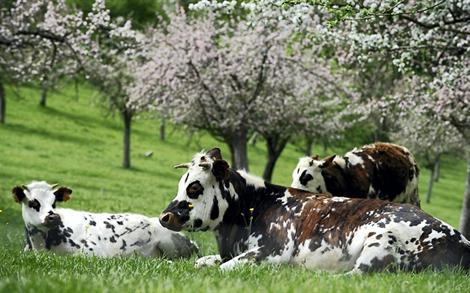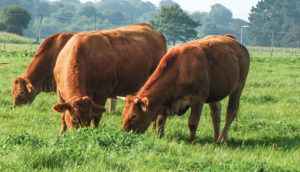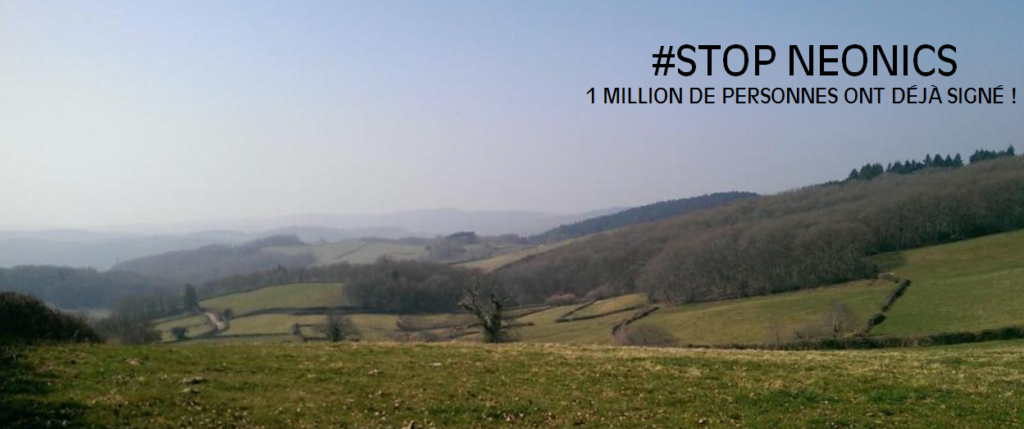My horse gave me a lesson in more ways than one not long ago. I was riding her down a beautiful stretch here in Normandy when suddenly she started hyperventilating, then twisted her body round as if to turn back. I coaxed her on to no avail and, with the bit well entrenched in her teeth, she took me off path away into the newly sown barley field opposite. She wouldn’t be calmed and we ended up wading through the wet mud beneath the crops, she snorting with panic, me trying to contain her and get us out of the sludge.
It was the cows. Not the Normandy cows; she has no trouble with them. It was the black and white ones, Holstein Friesians, or Hollondaises as they’re called here because they’re a Dutch breed. They are particularly inquisitive and frisky – at least in our neck of the woods and my horse is terrified of them; they have a kind of magnetic power to set her off from a long way away. We have many of them up here, although numbers seem to be dwindling (she will be relieved). These ones had come up to the fence waiting for us and they watched our antics in the mud opposite, heads bowed in concentration swaying a bit, front feet forward as if ready to veer away if challenged.
I told my story to the farmer next door, and asked him why we see less of these black and white ones around. ‘Ah, la Normande est la meilleure, the Normandy cow is the best’ he said and, shaking his finger at me, ‘those Hollondaises, too bony, too nervous, too stupid. The Normande, her milk is much creamier. Bring back la Normande.’
Which is exactly what’s happening now in Normandy.

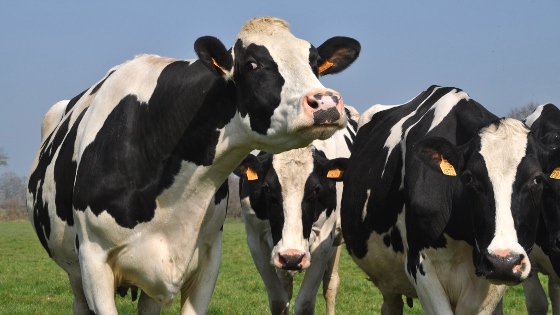
Less is more. Quality not quantity
Even if the Hollondaise is nicknamed the Milk Queen of all breeds, producing around 28 litres per day – the Normande gives 23 per day – her heyday many soon be over up here. The Normande is making a come-back. Her milk is indeed creamier with around 15 per cent more fat than the milk from a Prim Holstein, making it tastier and wholesome. The high quality butter and cream produced is becoming more and more popular and has an AOP label (Appellation d’Origine Protégée/Protected Designation of Origin) proving that the milk comes from that particular race of cow, the Normande. Something which customers are more and more keen to buy.
And, thanks to the demand for AOP labels – contrary to what was happening before – farmers can now earn more with the help from La Normande, that is more money for less quantity but for tastier quality: 1000 litres of milk from a Normande can bring at least €20 more than the milk from a Prim’Holstein, according to one farmer in the Cotentin region recently interviewed. As in Bio products, people are prepared to pay more for the particularly creamy quality and for regional, French breed dairy products.
Aid and incentives for the Normande
Recognising this trend and the high quality of her milk, the Normandy Region now offers farmers €460 for each Normandy cow bought to increase their existing herd, and an extra €100 euros for each heifer bought. The ceiling for this aid is €15.000, and it requires the farmer to increase his herd by 10 %. He gets an extra €110 for each Normande embryo inseminated, with a minimum of 10 inseminations. See here the directives published by the Region.
The Camembert Wars
An extra incentive for farmers are the recent agreements resulting from the ten year Camembert wars. As things stand at present, a Camembert producer can give his cheese the prestigious label AOP camembert de Normandie as opposed to the doctored Fabriqué en Normandie, on the condition his milk is of high quality (tests are undergone) and comes from a herd based in Normandy.
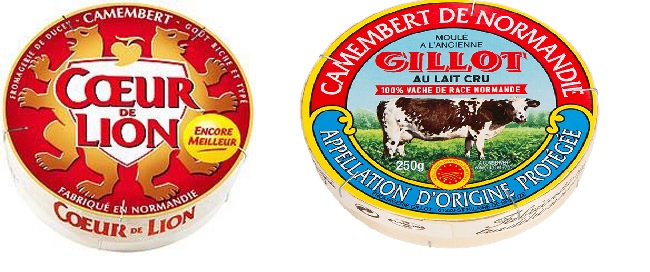
The extra label on the Camembert “cœur de gamme” (core range) guarantees a minimum of 50% of milk from the Normande (with 0% OGMs); the milk can be pasteurised or raw milk.
Other labels such as “haute de gamme” (premium), “veritable” (genuine), and “authentique” (authentic) are even better, guaranteeing that 66% of the milk used comes from the Normande, that the milk is raw and not pasteurised, and that the animals have access to grass all the year round, in Normandy.
There are of course, other races of cow up here, such as the Blonde d’Aquitaine with the short legs and the Limousines in their mahogany-coloured coats, who seem quite indifferent to you when you ride by. They are stockier than the skinny Hollondaises who seem happy together frolicking around their field, curious about any passer-by.
By comparison, the Normande seems like a wise old grandmother who looks up, pricks up her ears, but doesn’t interfere, who knows her place.
Which is here, in Normandy, where her beautiful piebald coat under the spring sunshine matches so well those little spots of shadow on the meadows cast by the leaves of the apple trees.
